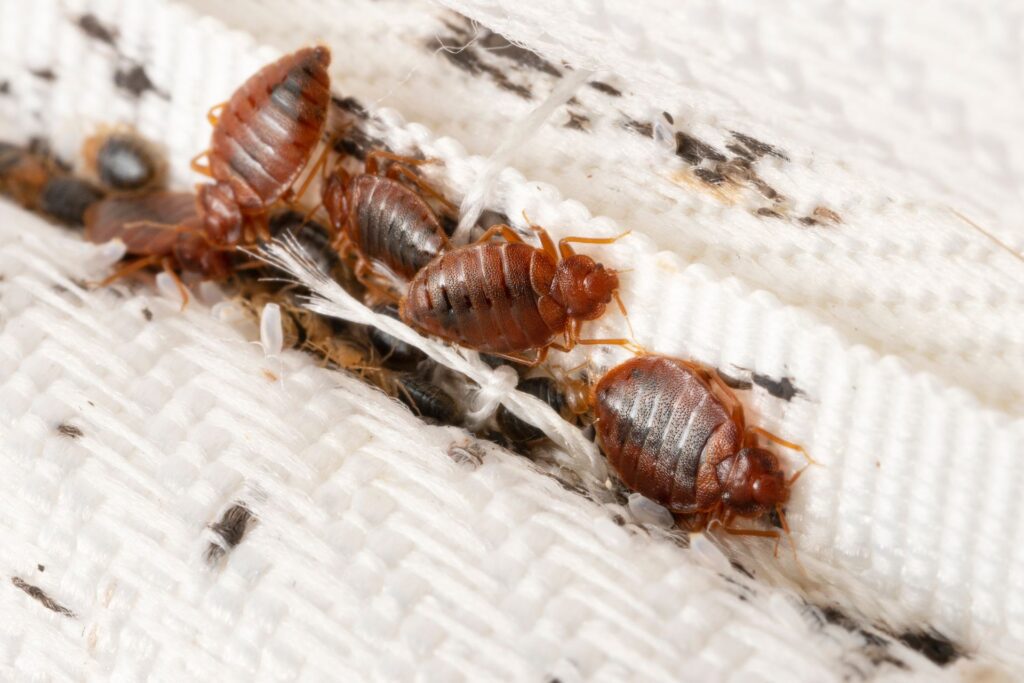

How Does Bed Bug Heat Treatment Work?
Short Answer: Bed bug heat treatment involves raising the temperature of an infested area to 120°F to 140°F (49°C to 60°C) to kill bed bugs and their eggs. Studies show heat treatments have a 95–100% success rate when done professionally, with temperatures lethal to bed bugs achieved in as little as 20 minutes but maintained for 90 minutes to 2 hours to ensure complete eradication. The process is chemical-free and effective against all life stages, including eggs, which require sustained temperatures of 125°F (52°C) for extermination.
1. Introduction to Bed Bug Heat Treatment
Bed bug heat treatment is one of the most advanced and effective methods available for eliminating infestations. By utilizing high temperatures to kill bed bugs at all life stages, this approach is gaining popularity among pest control professionals and homeowners alike. Unlike chemical treatments, heat treatment is a single-process solution that doesn’t rely on harmful pesticides. It is particularly appealing for its ability to penetrate hard-to-reach areas, such as cracks, crevices, and furniture, where bed bugs often hide. This eco-friendly, non-invasive option is considered a game-changer in the pest control industry.
2. How Heat Kills Bed Bugs How Does Bed Bug Heat Treatment Work?
Bed bugs are highly sensitive to heat, which disrupts their cellular structure and metabolic functions. When exposed to temperatures between 120°F and 140°F (49°C to 60°C) for a sustained period, both bed bugs and their eggs are destroyed. Eggs, which are notoriously resistant to many treatments, require exposure to 125°F (52°C) for at least 20 minutes to ensure eradication. Heat also penetrates deep into mattresses, baseboards, and furniture, making it an ideal solution for tackling even the most severe infestations.
3. The Step-by-Step Process How Does Bed Bug Heat Treatment Work?
The heat treatment process begins with a thorough inspection by a pest control specialist to identify infested areas and determine the scope of work. Before treatment, residents are instructed to remove heat-sensitive items, such as candles, electronics, and certain plastics. Technicians then place industrial-grade heaters and fans in strategic locations to distribute heat evenly. Throughout the treatment, wireless temperature sensors monitor the environment to ensure it consistently reaches lethal levels. This meticulous process ensures complete elimination of bed bugs.
4. Timeframe and Efficiency
Bed bug heat treatment is remarkably efficient, often completed within 4–8 hours. The treatment time depends on factors like the size of the space, level of infestation, and the presence of clutter. Once temperatures reach the required 120°F to 140°F, bed bugs typically die within 90 minutes to 2 hours. The process ensures every corner of the home is heated, leaving no safe havens for bed bugs to hide or escape. This efficiency makes heat treatment one of the fastest methods available for resolving infestations.
5. Safety and Environmental Benefits
Heat treatment is not only effective but also one of the safest methods for eliminating bed bugs. Unlike chemical treatments, which can leave toxic residues, heat is completely non-toxic and doesn’t harm the environment. It’s safe for families, including children and pets, as long as the space is properly prepared. Additionally, heat treatment reduces the need for multiple applications, cutting down on the overall environmental impact of pest control efforts.


6. Challenges of Heat Treatment
While highly effective, heat treatment does come with challenges. Proper preparation is crucial to ensure success, as heat-sensitive items must be removed beforehand to prevent damage. Uneven heating or failure to reach lethal temperatures in some areas can leave bed bugs alive, making professional execution essential. There’s also the need for temporary evacuation during the process, which may be inconvenient for some homeowners. Despite these challenges, the long-term benefits often outweigh any drawbacks.
7. Effectiveness and Statistics How Does Bed Bug Heat Treatment Work?
Studies show that professional heat treatments boast a 95–100% success rate, making it one of the most reliable options for bed bug eradication. This high success rate is due to the ability of heat to kill all life stages, including eggs, which are often resistant to chemical treatments. In contrast, DIY heat treatments frequently fail due to inadequate equipment or the inability to maintain consistent temperatures. Investing in professional heat treatment ensures a comprehensive solution that significantly reduces the chances of re-infestation.
8. Post-Treatment Maintenance
After a successful heat treatment, taking proactive steps to prevent re-infestation is critical. Homeowners should consider encasing mattresses and box springs in bed bug-proof covers and regularly vacuuming crevices and furniture. Decluttering the home can also minimize hiding spots, making it harder for bed bugs to establish themselves again. Periodic inspections by a pest control professional can help ensure that any early signs of bed bugs are caught and addressed promptly.
9. Who Should Consider Heat Treatment?
Heat treatment is particularly suitable for individuals dealing with severe infestations or cases where bed bugs have become resistant to pesticides. It’s also an excellent option for families with children or pets, as it eliminates the need for harsh chemicals. Additionally, property managers and landlords often prefer heat treatments for multi-unit housing because of its ability to treat multiple apartments simultaneously, reducing the risk of bed bugs spreading from one unit to another.
10. Comparing Heat Treatment to Other Methods
Compared to chemical treatments and freezing methods, heat treatment stands out for its speed and thoroughness. While chemical treatments often require multiple applications and can leave residue, heat treatment is a one-time process with no lingering chemicals. Freezing can be effective but is less practical for large spaces and doesn’t address eggs as efficiently as heat. Overall, heat treatment offers a balance of safety, effectiveness, and convenience that is hard to match.



